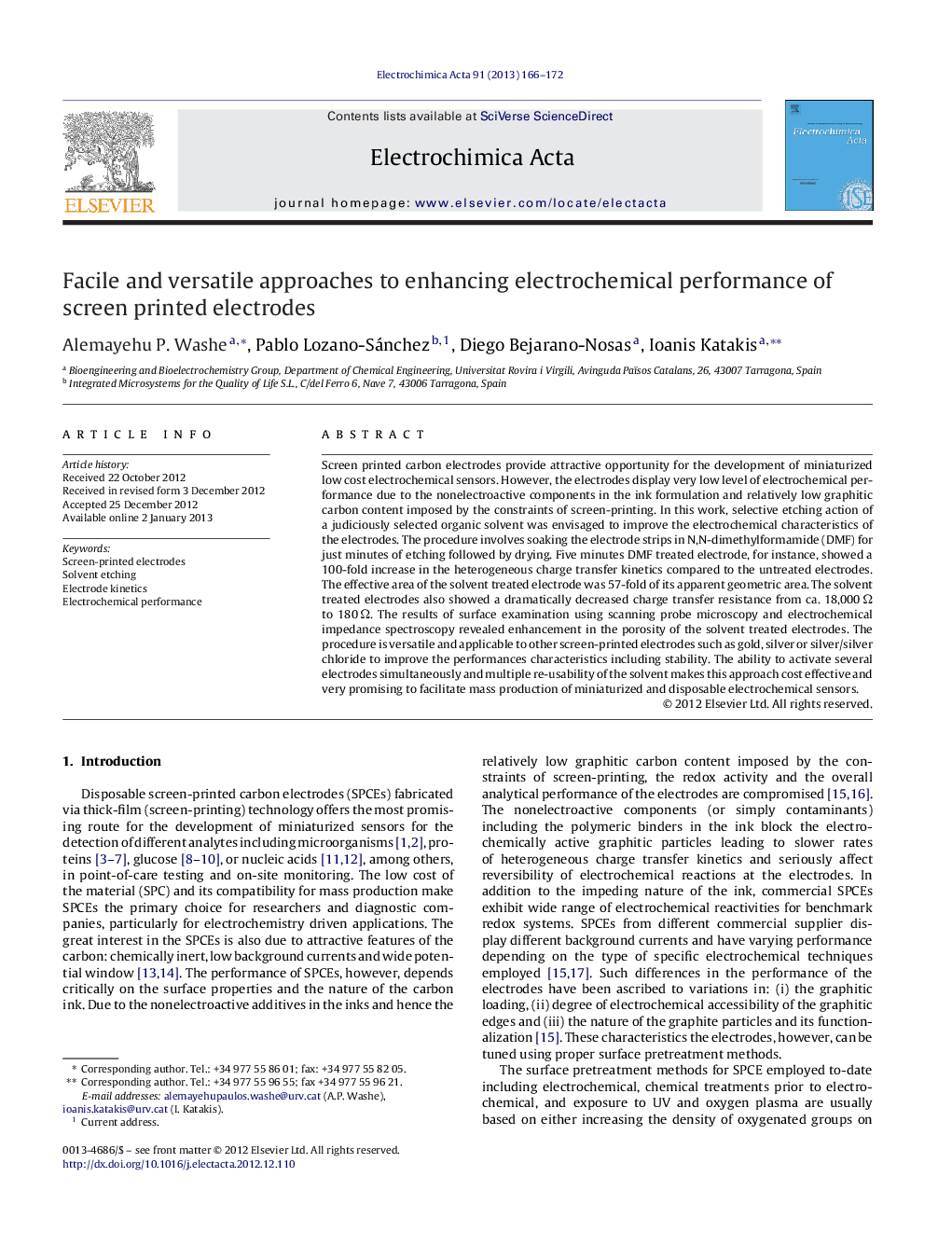| Article ID | Journal | Published Year | Pages | File Type |
|---|---|---|---|---|
| 186989 | Electrochimica Acta | 2013 | 7 Pages |
Screen printed carbon electrodes provide attractive opportunity for the development of miniaturized low cost electrochemical sensors. However, the electrodes display very low level of electrochemical performance due to the nonelectroactive components in the ink formulation and relatively low graphitic carbon content imposed by the constraints of screen-printing. In this work, selective etching action of a judiciously selected organic solvent was envisaged to improve the electrochemical characteristics of the electrodes. The procedure involves soaking the electrode strips in N,N-dimethylformamide (DMF) for just minutes of etching followed by drying. Five minutes DMF treated electrode, for instance, showed a 100-fold increase in the heterogeneous charge transfer kinetics compared to the untreated electrodes. The effective area of the solvent treated electrode was 57-fold of its apparent geometric area. The solvent treated electrodes also showed a dramatically decreased charge transfer resistance from ca. 18,000 Ω to 180 Ω. The results of surface examination using scanning probe microscopy and electrochemical impedance spectroscopy revealed enhancement in the porosity of the solvent treated electrodes. The procedure is versatile and applicable to other screen-printed electrodes such as gold, silver or silver/silver chloride to improve the performances characteristics including stability. The ability to activate several electrodes simultaneously and multiple re-usability of the solvent makes this approach cost effective and very promising to facilitate mass production of miniaturized and disposable electrochemical sensors.
